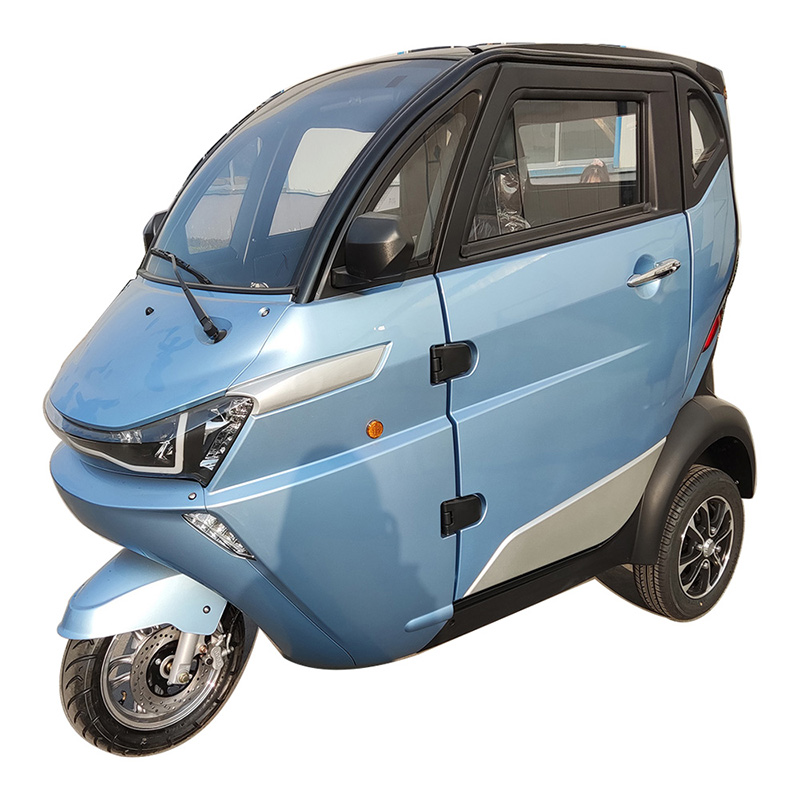Features and advantages of Three Wheels Electric Car
2023-10-16
Three-wheel electric cars, also known as electric trikes or tricycles, are compact vehicles that run on electric power. Here are some features and advantages of three-wheel electric cars:
1. Compact and Maneuverable: Three-wheel electric cars are designed to be compact and lightweight, making them highly maneuverable in urban environments. Their smaller size allows for easier parking and navigation through tight spaces, reducing congestion and improving overall mobility.
2. Eco-Friendly and Energy Efficient: Electric cars produce zero tailpipe emissions, making them environmentally friendly. They are powered by electricity, which can be generated from renewable sources, reducing reliance on fossil fuels and contributing to lower carbon emissions. Additionally, electric cars are more energy efficient compared to traditional gasoline-powered vehicles, resulting in reduced energy consumption.
3. Quiet Operation: Three-wheel electric cars operate quietly due to their electric propulsion system. This reduces noise pollution in urban areas, providing a more peaceful and enjoyable driving experience for both the occupants and the surrounding community.
4. Cost Savings: Electric vehicles generally have lower operating costs compared to traditional internal combustion engine vehicles. The cost of electricity is typically lower than gasoline or diesel, resulting in lower fuel expenses. Moreover, electric cars have fewer moving parts and require less maintenance, leading to potential long-term cost savings.
5. Acceleration and Torque: Electric motors provide instant torque, allowing three-wheel electric cars to deliver quick acceleration. This can enhance the driving experience, especially in urban settings where quick bursts of acceleration may be necessary for maneuvering through traffic or merging onto highways.
6. Safety Features: Three-wheel electric cars often come equipped with safety features such as seatbelts, airbags, and stability control systems. These safety features help protect the occupants in the event of a collision and improve overall vehicle stability and handling.
7. Range and Charging Infrastructure: Electric vehicles have seen significant advancements in battery technology, resulting in improved driving ranges. While three-wheel electric cars generally have smaller batteries compared to their four-wheeled counterparts, they still offer sufficient range for urban commuting and short trips. Additionally, the availability of charging infrastructure is expanding, making it easier to find charging stations and recharge the vehicle's battery when needed.
8. Easy Operation: Three-wheel electric cars are often designed with user-friendly features for easy operation. They may have simplified controls and interfaces, making them accessible to a wide range of drivers, including those who are new to electric vehicles.
9. Potential for Customization: Three-wheel electric cars offer the potential for customization and personalization. They can be modified with additional features, such as cargo compartments, storage options, or even convertible designs, to suit specific needs and preferences.
10. Government Incentives: Many governments around the world provide incentives and subsidies to encourage the adoption of electric vehicles. These incentives can include tax credits, rebates, or preferential parking and charging benefits, making three-wheel electric cars more affordable and attractive for potential buyers.
In summary, three-wheel electric cars offer features such as compactness, maneuverability, eco-friendliness, energy efficiency, quiet operation, cost savings, quick acceleration, safety features, improved range and charging infrastructure, easy operation, potential for customization, and government incentives. These features make them a viable and sustainable transportation option for urban commuting and short-distance travel.




